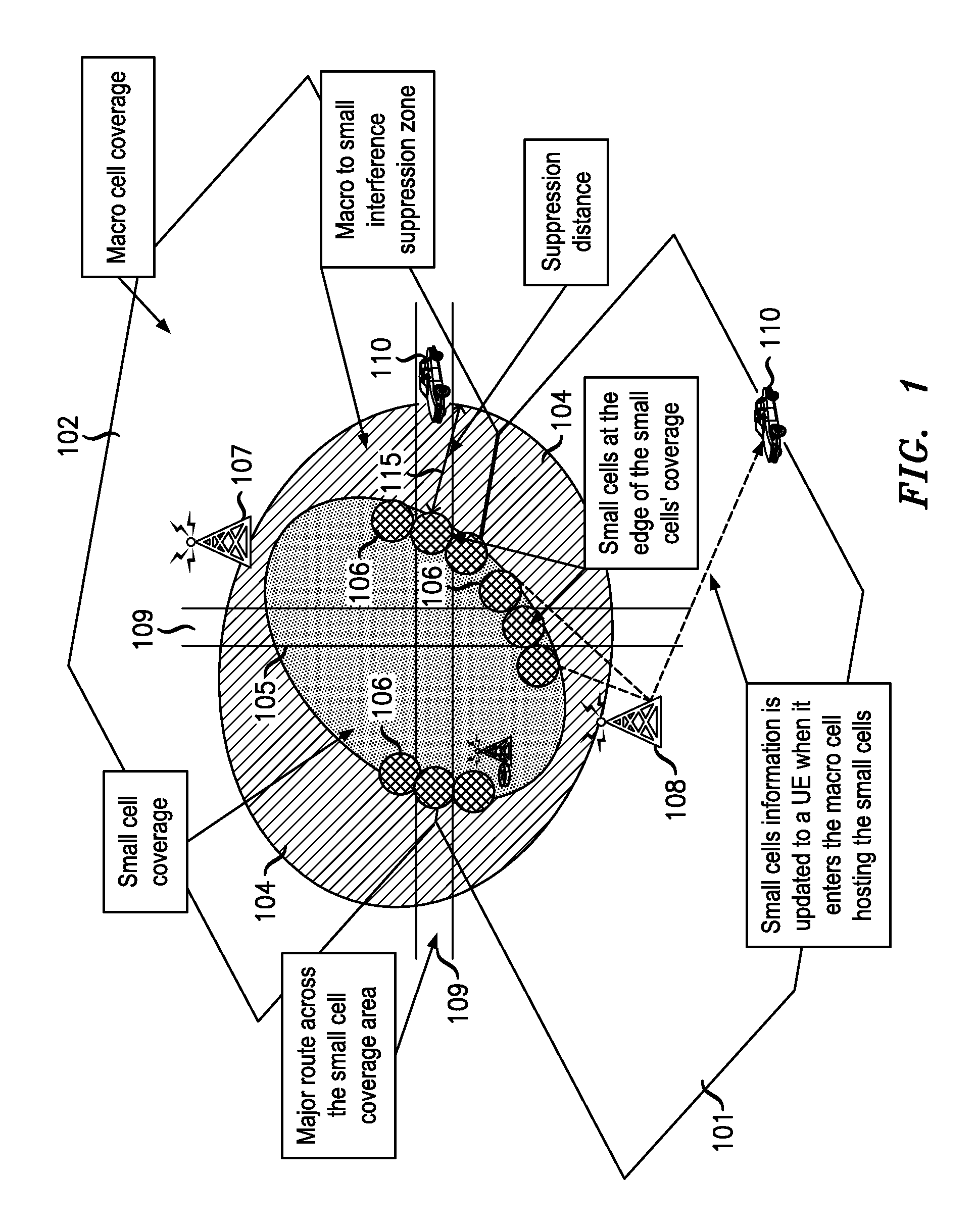Method And Apparatus For Interference Suppression In Heterogenous Networks
a heterogeneous network and interference suppression technology, applied in electrical equipment, power management, wireless commuication services, etc., can solve the problems of significant interference management problems in the hetnet, difficult to conduct per-ue network controlled interference between the macro cell and the small cell in the heterogeneous network, and experience excessive interference. , to achieve the effect of reducing the transmission power of the ue, minimizing the interference of the macro cell and the small cell, and minimizing the interference interferen
- Summary
- Abstract
- Description
- Claims
- Application Information
AI Technical Summary
Benefits of technology
Problems solved by technology
Method used
Image
Examples
Embodiment Construction
[0011]In the following description, for purposes of explanation and not limitation, specific details are set forth such as particular architectures, interfaces, techniques, etc., in order to provide a thorough understanding of illustrative embodiments of the invention. However, it will be apparent to those skilled in the art that the invention may be practiced in other illustrative embodiments that depart from these specific details. In some instances, detailed descriptions of well-known devices, circuits, and methods are omitted so as not to obscure the description of described embodiments with unnecessary detail. All principles, aspects, and embodiments, as well as specific examples thereof, are intended to encompass both structural and functional equivalents thereof. Additionally, it is intended that such equivalents include both currently known equivalents as well as equivalents developed in the future.
[0012]The invention is described hereafter in terms of power transmission int...
PUM
 Login to View More
Login to View More Abstract
Description
Claims
Application Information
 Login to View More
Login to View More - R&D
- Intellectual Property
- Life Sciences
- Materials
- Tech Scout
- Unparalleled Data Quality
- Higher Quality Content
- 60% Fewer Hallucinations
Browse by: Latest US Patents, China's latest patents, Technical Efficacy Thesaurus, Application Domain, Technology Topic, Popular Technical Reports.
© 2025 PatSnap. All rights reserved.Legal|Privacy policy|Modern Slavery Act Transparency Statement|Sitemap|About US| Contact US: help@patsnap.com


